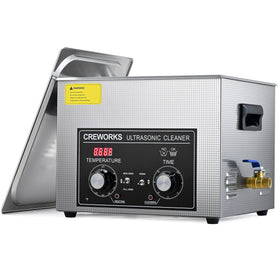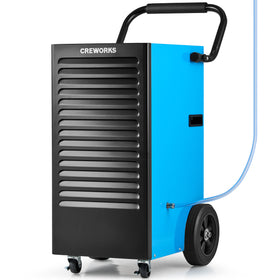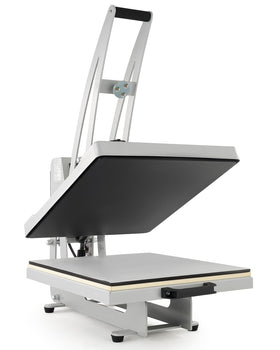With over 10000+ orders
With over 10000+ orders
When I first heard about the debate around sonic vs ultrasonic cleaners, I assumed they were just two names for the same thing. It turns out, they are not. These two cleaning technologies may seem similar; however, they operate in quite astonishing manners, and they are used with different aims as well.
Whether you have greasy tools, delicate jewelry, or you just want to wash your makeup brushes, it is always useful to choose the right machine that will be able to finish your job faster, be cost-effective, and may preserve your favorite objects. I will take you through the main differences between the two, how they work, and which one can be a suitable option for cleaning.

So, before we get into recommendations, let me talk about the core difference between the two.
Sonic cleaners employ high-frequency (usually audible) vibration to mix the cleaning solution. The vibrations cause the movement of the water, which removes dirt and grime. Although sonic cleaners are great at cleaning the surface-level clutter, they are most efficient for gentle cleaning jobs such as those involving makeup brushes or a quick rinse.
Now, how does an ultrasonic cleaner work? Rather than using audible vibrations, it employs high-frequency sound waves (typically about 40 kHz) to generate cavitation bubbles of microscopic size in a liquid. These bubbles burst violently and drive out even the smallest particles of dirt in the very crevices, without causing destruction to the more delicate pieces.
By saying that it cleans on a microscopic level, I mean it. Whether it is diamond settings or small carburetor pieces, ultrasonic cleaners remove dirt from the inaccessible areas that toothbrushes, cloths, and even sonic cleaners cannot.
It all comes down to what you’re cleaning. So, let me make this super clear with a comparison table:
| Use Case | Recommended Cleaner | Why? |
| Everyday household items | Ultrasonic | Safer and more effective for delicate or varied materials. |
| Jewelry or eyeglasses | Ultrasonic | Reaches tiny crevices without damaging stones or coatings. |
| Makeup brushes | Sonic | Gentle agitation is enough; too powerful agitation can damage bristles. |
| Metal tools or engine parts | Ultrasonic | Gets deep into crevices to remove carbon, oil, etc. |
| Large surfaces or quick rinse | Sonic | Good for removing loose debris with lower precision. |
So in the sonic vs ultrasonic cleaners showdown, ultrasonic is the clear winner in most cases, but not all. Sonic cleaners still hold value when gentleness and speed are priorities.

If you’ve decided an ultrasonic cleaner is the right choice, let me help you find one that fits your needs. I’ve tested and compared three excellent models from Creworks, and here’s how I’d match them to different use cases:
Compact and efficient, this 60W Knob ultrasonic cleaner model is perfect for homes and small labs. It’s gentle enough for your grandma’s pearls and powerful enough for your gym retainers. With a 100W heater and digital timer, you can control every minute and degree.
The elongated design of this 240W ultrasonic cleaner is designed to clean those long, narrow tools that others can’t reach. The 300W heating power melts through grease, and the digital timer ensures you’re in full control. It’s ideal for pros and enthusiasts alike.
This Upgraded 240W Ultrasonic Cleaner is my go-to recommendation if you want maximum flexibility. It offers a gentle mode for delicate items and a degas mode for boosting cleaning performance, especially useful with new solutions. Plus, it’s built to last with a stainless steel body and smart safety features.

If you still can’t decide between sonic vs ultrasonic cleaners, here’s my honest advice:
From my experience, ultrasonic cleaners are much more diverse. They have helped me cut down countless hours of scrubbing up and have given me things back that I thought were hopeless.
Still unsure? Why not begin with one of the Creworks ultrasonics: they are available in right sizes and strengths, so you can get the right one to suit your lifestyle or business.
So, are you ready to take your cleaning to the next level? Explore the entire lineup of ultrasonic cleaners that Creworks offers and choose the best that suits you.












Leave a comment